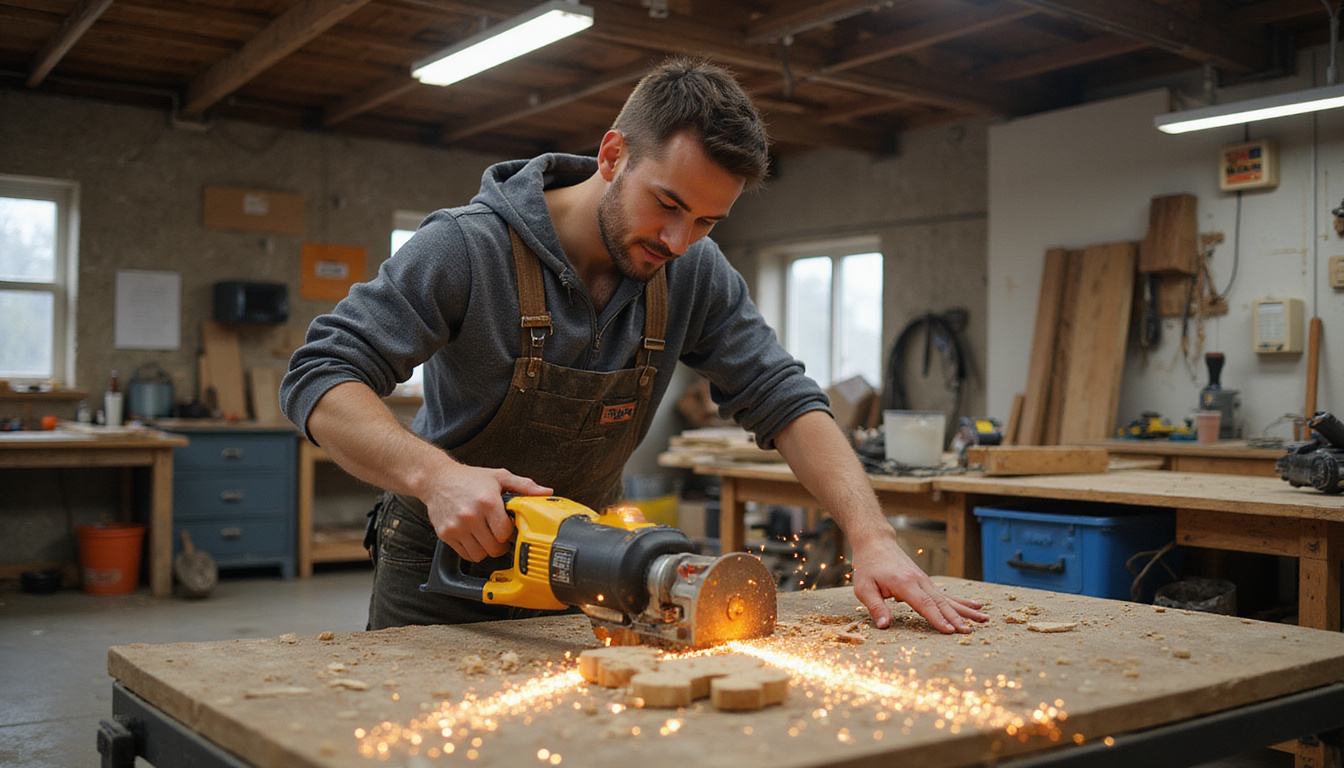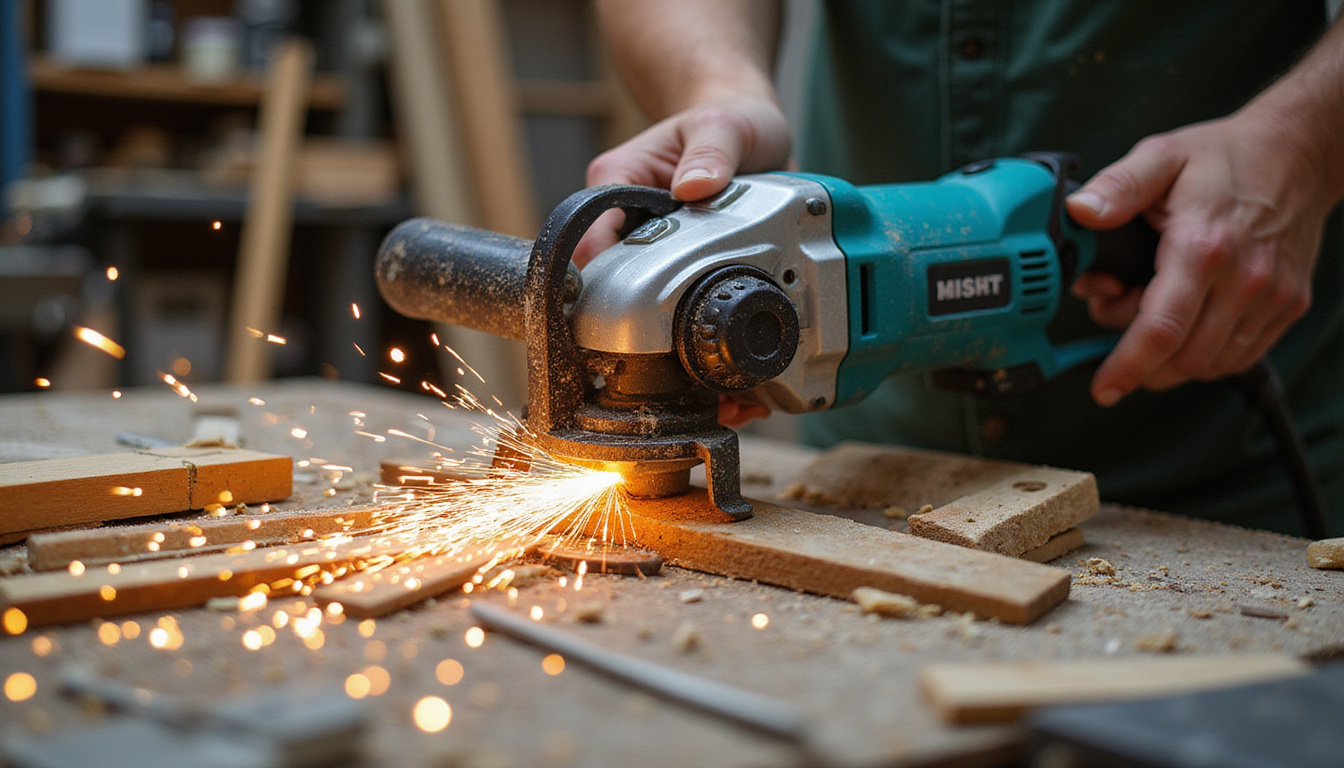Unlocking the Power of the Reciprocating Saw: Essential Tips for Every DIYer

Have you ever encountered a stubborn piece of wood or metal during a DIY project? If so, a reciprocating saw might just be the game-changer you need! Known for its versatility and power, this tool is a favorite among both seasoned pros and weekend warriors alike. Understanding how to effectively use a reciprocating saw can open the door to a whole new world of project possibilities, from home renovations to crafting custom furniture. In this blog post, we'll explore everything you need to know about the reciprocating saw—from choosing the right blade to essential safety precautions—ensuring you wield this tool like a pro. Let’s dive in!

Key Takeaways
- A reciprocating saw is a versatile tool essential for various DIY projects.
- Choosing the correct blade is crucial for efficient cutting and achieving different results.
- Safety precautions, such as wearing protective gear, are vital when operating a reciprocating saw.
- Employing proper techniques can enhance cutting performance and accuracy.
- Regular maintenance ensures the longevity and optimal performance of your reciprocating saw.
Introduction to the Reciprocating Saw: What You Need to Know
Ever found yourself in the middle of a home improvement project and wished you had a tool that could tackle almost anything? Enter the reciprocating saw—your new best friend in the world of DIY and professional cutting tasks! This versatile power tool is designed for a range of applications, whether you're demolishing old structures, cutting through pipes, or trimming trees. With its unique design and powerful motor, the reciprocating saw delivers unmatched flexibility and efficiency for all your cutting needs. In this guide, we’ll explore everything you need to know about reciprocating saws, including their features, how to choose the right one, and tips for safe operation. Get ready to elevate your toolkit with this essential saw!
Choosing the Right Blade for Your Project
When it comes to maximizing the efficiency of your reciprocating saw, choosing the right blade is crucial. Each blade is designed for specific materials and cutting applications, which can significantly impact your project's outcome. For instance, if you're cutting through wood, a wood-cutting blade with aggressive teeth will allow for quick cuts. On the other hand, metal cutting blades feature finer teeth and a tougher design to withstand the added stress of tougher materials. It's also important to consider the thickness of the material you'll be cutting; thicker materials may require longer blades for added stability. Additionally, experimenting with different tooth counts can help you achieve smoother finishes or faster cuts, depending on your project needs. Overall, taking the time to select the appropriate blade for your reciprocating saw will not only enhance performance but also ensure that your projects are completed with precision and ease.
'The only limit to your impact is your imagination and commitment.' - Tony Robbins
Safety Precautions When Using a Reciprocating Saw
When using a reciprocating saw, it's crucial to prioritize safety to ensure a smooth and accident-free operation. First and foremost, always wear appropriate personal protective equipment (PPE), including safety goggles, ear protection, and gloves, to shield yourself from debris and noise. Before starting, inspect the saw for any damage, and make sure that the blade is securely attached and suitable for the material you'll be cutting. Maintain a firm grip and keep your hands away from the cutting path to avoid injury; using both hands generally offers better control. Always unplug the saw or remove the battery when changing blades or doing maintenance. Lastly, be mindful of your surroundings and ensure that there are no other individuals close by, as the saw can produce flying debris that can pose risks to others. By following these safety precautions, you can maximize the effectiveness of your reciprocating saw while minimizing potential hazards.

Techniques for Effective Cutting with a Reciprocating Saw
Using a reciprocating saw can be a game-changer in your DIY projects, but mastering effective cutting techniques is key to achieving clean, efficient cuts. First, always ensure you choose the right blade for the material you’re cutting, whether it's wood, metal, or masonry. A wood-cutting blade helps with thicker beams, while a metal-cutting blade is ideal for pipes or sheet metals. When making cuts, let the saw do the work—apply steady pressure without pushing too hard, as excessive force can lead to uneven cuts and blade wear. For intricate cuts, use the orbital action setting if your saw has one, allowing the tool to move in an elliptical motion that enhances cutting speed and efficiency. Lastly, always prioritize safety: make sure you wear protective eyewear and stabilize your workpiece securely to avoid any accidents while cutting.
Common Uses for a Reciprocating Saw in DIY Projects
When it comes to versatile tools in the DIY toolkit, the reciprocating saw stands out as a game-changer. This powerful tool, often referred to as a 'recip saw,' is not just for professional contractors; it's perfect for homeowners tackling various projects. One of the most common uses for a reciprocating saw is demolition work, allowing you to swiftly cut through wood, metal, and even drywall, making it ideal for remodeling projects. Additionally, it excels in pruning trees and shrubs, providing a convenient way to clear out overgrown foliage. For those venturing into furniture building or upcycling, a reciprocating saw can help cut precise angles in hardwood, enabling creative designs. It's also a go-to tool for plumbing jobs, such as cutting pipes with ease. Overall, the reciprocating saw's ability to handle tough cuts with speed and efficiency makes it an indispensable ally in any DIY enthusiast's arsenal.
Frequently Asked Questions
What is a reciprocating saw used for?
A reciprocating saw is commonly used for cutting various materials such as wood, metal, and plastic. It's especially useful for demolition projects, renovating spaces, and general cutting tasks where precision is less critical.
How do I choose the right blade for my reciprocating saw?
Selecting the right blade depends on the material you're cutting. For wood, use blades designed for fast cutting, while metal-blade options are better for cutting through metal. Always check the tooth count and design for optimal performance based on your project.
What safety precautions should I take when using a reciprocating saw?
Always wear protective gear, including safety glasses and gloves, to protect against flying debris. Ensure your work area is clear, keep both hands on the saw while operating, and avoid loose clothing or jewelry that could get caught in the blade.
What are some common techniques for effective cutting with a reciprocating saw?
For effective cutting, maintain a steady grip and let the saw do the work without forcing it. Use slow, controlled motions to ensure accuracy and avoid overheating the blade. Additionally, cutting straight lines or making plunge cuts can enhance results.
How can I maintain my reciprocating saw for longevity?
To maintain your reciprocating saw, regularly inspect the blade for wear and tear, clean the saw to remove sawdust and debris, and ensure all moving parts are well-lubricated. Store the saw in a dry place and protect the blades to prevent damage.

